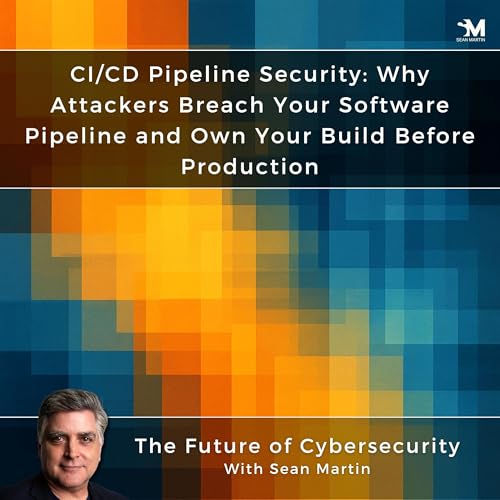⬥GUEST⬥
Walter Haydock, Founder, StackAware | On Linkedin: https://www.linkedin.com/in/walter-haydock/
⬥HOST⬥
Sean Martin, Co-Founder at ITSPmagazine and Host of Redefining CyberSecurity Podcast | On LinkedIn: https://www.linkedin.com/in/imsmartin/ | Website: https://www.seanmartin.com
⬥EPISODE NOTES⬥
No-Code Meets AI: Who’s Really in Control?
As AI gets embedded deeper into business workflows, a new player has entered the security conversation: no-code automation tools. In this episode of Redefining CyberSecurity, host Sean Martin speaks with Walter Haydock, founder of StackAware, about the emerging risks when AI, automation, and business users collide—often without traditional IT or security oversight.
Haydock shares how organizations are increasingly using tools like Zapier and Microsoft Copilot Studio to connect systems, automate tasks, and boost productivity—all without writing a single line of code. While this democratization of development can accelerate innovation, it also introduces serious risks when systems are built and deployed without governance, testing, or visibility.
The conversation surfaces critical blind spots. Business users may be automating sensitive workflows involving customer data, proprietary systems, or third-party APIs—without realizing the implications. AI prompts gone wrong can trigger mass emails, delete databases, or unintentionally expose confidential records. Recursion loops, poor authentication, and ambiguous access rights are all too easy to introduce when development moves this fast and loose.
Haydock emphasizes that this isn’t just a technology issue—it’s an organizational one. Companies need to decide: who owns risk when anyone can build and deploy a business process? He encourages a layered approach, including lightweight approval processes, human-in-the-loop checkpoints for sensitive actions, and upfront evaluations of tools for legal compliance and data residency.
Security teams, he notes, must resist the urge to block no-code outright. Instead, they should enable safer adoption through clear guidelines, tool allowlists, training, and risk scoring systems. Meanwhile, business leaders must engage early with compliance and risk stakeholders to ensure their productivity gains don’t come at the expense of long-term exposure.
For organizations embracing AI-powered automation, this episode offers a clear takeaway: treat no-code like production code—because that’s exactly what it is.
⬥ADDITIONAL INFORMATION⬥
✨ More Redefining CyberSecurity Podcast:
🎧 https://www.seanmartin.com/redefining-cybersecurity-podcast
Redefining CyberSecurity Podcast on YouTube:
📺 https://www.youtube.com/playlist?list=PLnYu0psdcllS9aVGdiakVss9u7xgYDKYq
📝 The Future of Cybersecurity Newsletter: https://www.linkedin.com/newsletters/7108625890296614912/
Interested in sponsoring this show with a podcast ad placement? Learn more:
👉 https://itspm.ag/podadplc
⬥KEYWORDS⬥
sean martin, walter haydock, automation, ai, nocode, compliance, governance, orchestration, data privacy, redefining cybersecurity, cybersecurity podcast, redefining cybersecurity podcast
Hosted by Simplecast, an AdsWizz company. See pcm.adswizz.com for information about our collection and use of personal data for advertising.
 36 mins
36 mins 2 mins
2 mins 52 mins
52 mins 40 mins
40 mins 4 mins
4 mins 38 mins
38 mins 8 mins
8 mins 27 mins
27 mins

